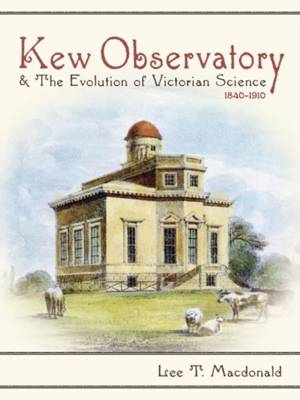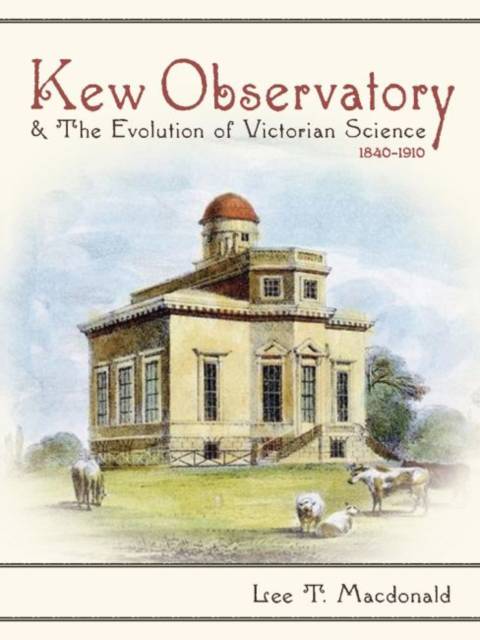
- Afhalen na 1 uur in een winkel met voorraad
- Gratis thuislevering in België vanaf € 30
- Ruim aanbod met 7 miljoen producten
- Afhalen na 1 uur in een winkel met voorraad
- Gratis thuislevering in België vanaf € 30
- Ruim aanbod met 7 miljoen producten
Zoeken
Kew Observatory and the Evolution of Victorian Science, 1840-1910
Lee T MacDonald
€ 91,95
+ 183 punten
Omschrijving
Kew Observatory was originally built in 1769 for King George III, a keen amateur astronomer, so that he could observe the transit of Venus. By the mid-nineteenth century, it was a world-leading center for four major sciences: geomagnetism, meteorology, solar physics, and standardization. Long before government cutbacks forced its closure in 1980, the observatory was run by both major bodies responsible for the management of science in Britain: first the British Association for the Advancement of Science, and then, from 1871, the Royal Society. Kew Observatory influenced and was influenced by many of the larger developments in the physical sciences during the second half of the nineteenth century, while many of the major figures involved were in some way affiliated with Kew. Lee T. Macdonald explores the extraordinary story of this important scientific institution as it rose to prominence during the Victorian era. His book offers fresh new insights into key historical issues in nineteenth-century science: the patronage of science; relations between science and government; the evolution of the observatory sciences; and the origins and early years of the National Physical Laboratory, once an extension of Kew and now the largest applied physics organization in the United Kingdom.
Specificaties
Betrokkenen
- Auteur(s):
- Uitgeverij:
Inhoud
- Aantal bladzijden:
- 336
- Taal:
- Engels
- Reeks:
Eigenschappen
- Productcode (EAN):
- 9780822945260
- Verschijningsdatum:
- 18/05/2018
- Uitvoering:
- Hardcover
- Formaat:
- Genaaid
- Afmetingen:
- 150 mm x 218 mm
- Gewicht:
- 544 g

Alleen bij Standaard Boekhandel
+ 183 punten op je klantenkaart van Standaard Boekhandel
Beoordelingen
We publiceren alleen reviews die voldoen aan de voorwaarden voor reviews. Bekijk onze voorwaarden voor reviews.











